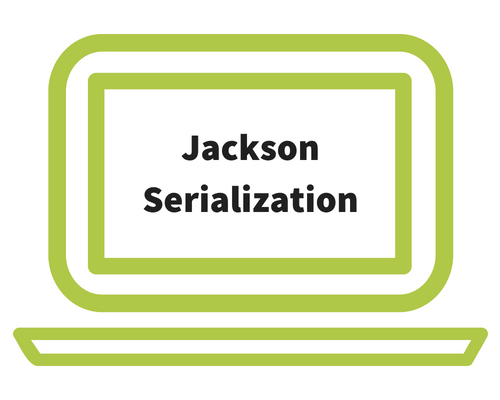JsonNullSerializer to send empty string instead of null value – Set them to “empty string”.
In this article, we’re going to look at a more advanced “use-case” of using Jackson to write a custom serializer.
Here are the steps (for Jackson < 2.0):
Step 1: Add Jackson libraries to your environment.
For Maven
<!– https://mvnrepository.com/artifact/com.fasterxml.jackson.core/jackson-core –>
<dependency>
<groupId>com.fasterxml.jackson.core</groupId>
<artifactId>jackson-core</artifactId>
<version>2.9.4</version>
</dependency>
For Gradle
// https://mvnrepository.com/artifact/com.fasterxml.jackson.core/jackson-core
compile group: ‘com.fasterxml.jackson.core’, name: ‘jackson-core’, version: ‘2.9.4’
Step 2: Write your custom null serializer.
import java.io.IOException;
import com.fasterxml.jackson.databind.JsonSerializer;
import com.fasterxml.jackson.databind.SerializerProvider;
public class NullSerializer extends JsonSerializer<Object>
{
@Override
public void serialize(Object o, com.fasterxml.jackson.core.JsonGenerator jsonGenerator, SerializerProvider serializerProvider) throws IOException, com.fasterxml.jackson.core.JsonProcessingException { jsonGenerator.writeString(“”);
}
}
Step 3: Register this with Jackson object mapper.
import com.fasterxml.jackson.databind.ObjectMapper;
import com.fasterxml.jackson.databind.ser.DefaultSerializerProvider;
import com.XXX.NullSerializer;
public class CustomObjectMapper extends ObjectMapper
{
public CustomObjectMapper()
{
super();
DefaultSerializerProvider.Impl sp = new DefaultSerializerProvider.Impl();
sp.setNullValueSerializer(new NullSerializer());
this.setSerializerProvider(sp);
}
}
Step 4: Register this object mapper with Spring MVC by creating a bean in your Spring application class.
package com.sfl.is.mfn;
import com.fasterxml.jackson.databind.ObjectMapper;
import com.fasterxml.jackson.databind.SerializationConfig;
import com.XXX.CustomObjectMapper;
import org.slf4j.Logger;
import org.slf4j.LoggerFactory;
import org.springframework.boot.SpringApplication;
import org.springframework.boot.actuate.autoconfigure.*;
import org.springframework.boot.autoconfigure.EnableAutoConfiguration;
import org.springframework.boot.autoconfigure.liquibase.LiquibaseProperties;
import org.springframework.boot.context.properties.EnableConfigurationProperties;
import org.springframework.context.annotation.Bean;
import org.springframework.context.annotation.ComponentScan;
import org.springframework.web.servlet.config.annotation.WebMvcConfigurer;
import org.springframework.web.servlet.config.annotation.WebMvcConfigurerAdapter;
import javax.annotation.PostConstruct;
import java.net.InetAddress;
import java.net.UnknownHostException;
import java.util.Arrays;
import java.util.Collection;
@ComponentScan
@EnableAutoConfiguration(exclude = { MetricFilterAutoConfiguration.class, MetricRepositoryAutoConfiguration.class })
@EnableConfigurationProperties({ LiquibaseProperties.class, ApplicationProperties.class })
public class NullToEmptyApplication
{
private static final Logger log = LoggerFactory.getLogger(MindfullnessWebApiApp.class);
public NullToEmptyApplication()
{
}
public static void main(String[] args) throws UnknownHostException
{
SpringApplication app = new SpringApplication(NullToEmptyApplication.class);
}
@Bean
public ObjectMapper jacksonObjectMapper()
{
return new CustomObjectMapper();
}
@Bean
public SerializationConfig serializationConfig()
{
return jacksonObjectMapper()
.getSerializationConfig();
}
}
You might also like
Stay ahead in tech with Sunflower Lab’s curated blogs, sorted by technology type. From AI to Digital Products, explore cutting-edge developments in our insightful, categorized collection. Dive in and stay informed about the ever-evolving digital landscape with Sunflower Lab.




